Categories
Subjects
Authors
Artists
Venues
Locations
Calendar
Filter
Done
March 22, 2020 – Review
Leila Hekmat’s “CROCOPAZZO!”
Alan Murrin
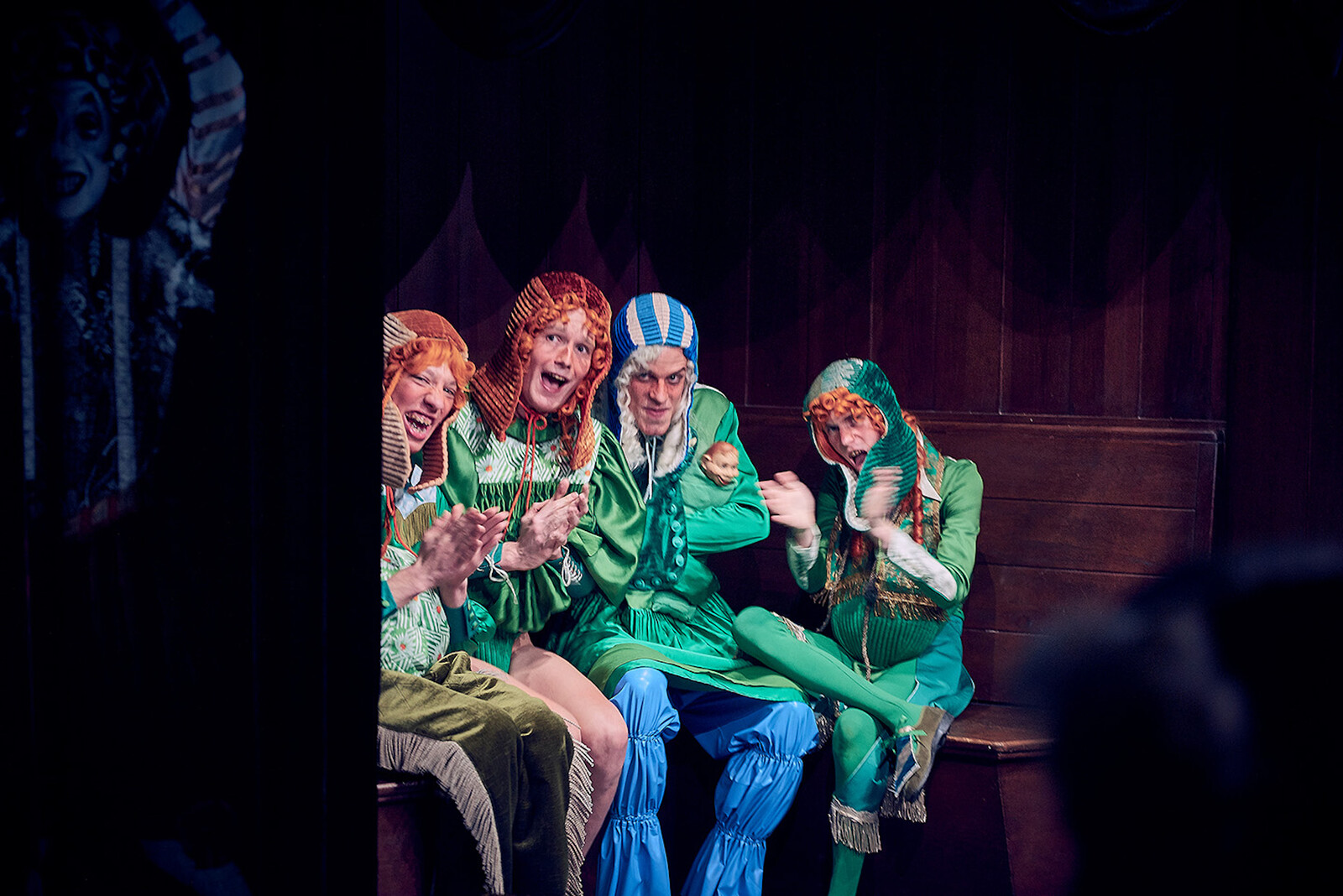
Individualistic societies are driven by the belief that happiness is to be found by accessing our “best” and most “authentic” selves, and that this can be achieved by spending money. Therapeutic practices ranging from the seemingly benign to the dangerously experimental enforce the psychological norms that uphold that system. But what happens if we relinquish control of our drives and desires, rather than trying to make them cohere? And what happens if that process is presented as entertainment? Leila Hekmat’s carnivalesque exhibition—prematurely closed as people are forced into their houses by Covid-19—conducts a dangerous experiment of its own: can a family induce psychosis in one member by forcing that individual to bear the weight of their collective dysfunction?
Hekmat writes, directs, and creates costumes for highly aestheticized experimental theatre pieces performed in intimate spaces. Her previous exhibition, “I Was Not Invited” (2018, co-presented by Bortolozzi and Duddell’s Hong Kong), took inspiration from Franz Schubert’s Winterreisse (1828), the poetry of Stéphane Mallarmé, and Roland Barthes’s A Lover’s Discourse (1977), and—like this show—found humor in suffering. “CROCOPAZZO!” is split across three rooms, the first filled with eight mannequins posed as if interrupted mid-dialogue. One figure raises its palms in an attitude of …
September 20, 2016 – Feature
Berlin Roundup
Matthew Evans
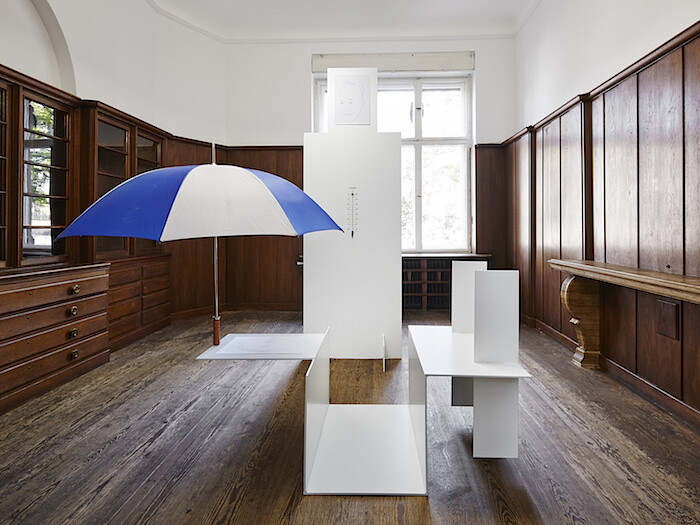
Berlin affluence is an oxymoron that might describe something in the big gap between pilsner and champagne, or pork schnitzel and sous-vide. Events like Berlin Art Week and its commercial fair abc art berlin contemporary have been pushing the German capital onto the national and international buyers’ tour for nine years now. It remains an odd positioning, as Berlin isn’t an obviously digestible city for many collectors; it lacks their creature comforts: the ubiquity of restricted access and unaffordable prices with enough locals who can afford to keep them that way. And art fairs (not to be confused with life) are most successful—and most distracting—when the rich feel hungry and foot the bill for the entertainment. But it’s an important exercise to distinguish between wealth and security (not to be confused with fear). The former is an uncertain orgasm of contrasts, which has become aesthetic cliché, while the latter is more interesting and maybe even radical today. Without the pressure (and pleasure) of fast and fat capital in recent history, Berlin has profited from this advantage, and although events like abc might be experimenting to revise that, the city still remains at one remove, which is a privilege, because the …
April 1, 2013 – Review
Ed Atkins’s “Warm, Warm, Warm Spring Mouths”
Kirsty Bell
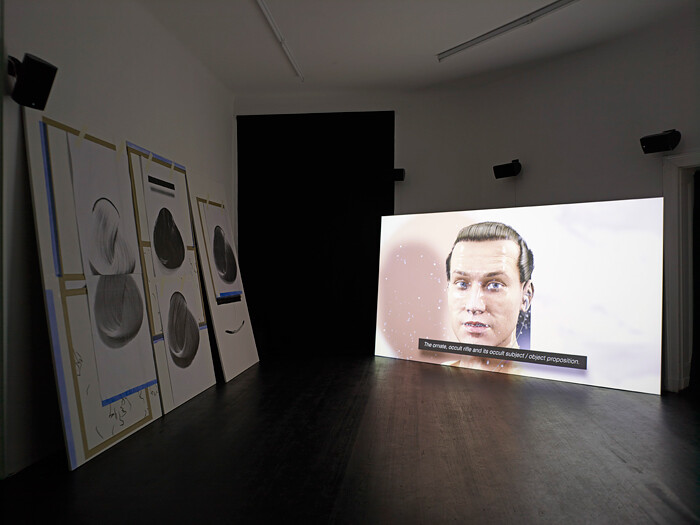
If you are looking for an artist who really confronts the so-called “Digital Divide” and asks “what it means to think, see, and filter affect through the digital” (to quote from a critical dispute that recently played out in the pages of Artforum), then British filmmaker Ed Atkins is your man. Born in 1982, he has age on his side when it comes to relating to the digital experience and its effects. The pair of films on show at Isabella Bortolozzi, Paris Green (2009) and Warm, Warm, Warm Spring Mouths (2013), parenthesize a four-year development. During this time, Atkins has moved from a production process still rooted in the real world (real-time footage of recognizable things) to its total consumption through the technological possibilities of the digital (all imagery now being produced within the interface of the computer.)
As tactile as its title may be, the new work, Warm, Warm, Warm Spring Mouths (2013), pictures the digitalization of existence from the inside, in all its cold alienating surrogacy. We see the head and taut, muscular torso of a man sitting on a chair in a digital no-space, with a mane of incredibly long straight hair, sometimes combed right over his face …
January 13, 2012 – Review
Jos de Gruyter & Harald Thys’s "Im Reich der Sonnenfinsternis"
Ana Teixeira Pinto
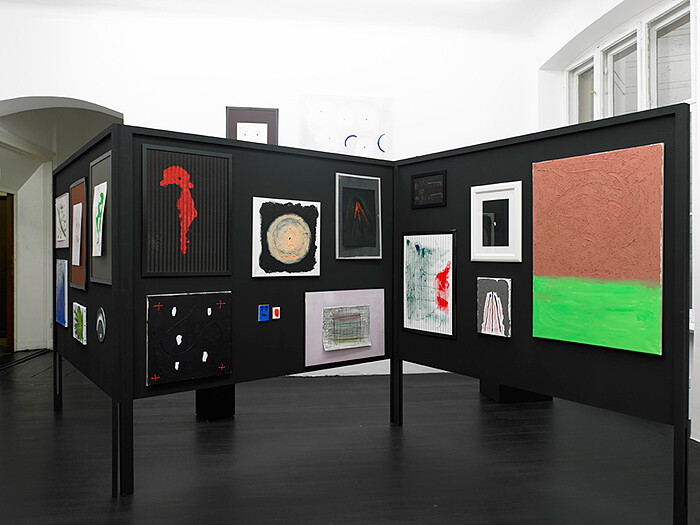
“Nothing is funnier than unhappiness.” After seeing “Im Reich der Sonnenfinsternis” the bleak exhibition by Jos de Gruyter and Harld Thys currently on display at Isabella Bortolozzi in Berlin, Beckett’s utterance comes to mind.
“Im Reich der Sonnenfinsternis” (In the Empire of the Solar Eclipse, 2011) is presented as the postmortem retrospective of a fictional character named Johannes, a middle-aged, middle-class, amateur painter who has recently taken his own life. Johannes, it appears, was a prolific painter, his oeuvre comprising some 120 small-scale works installed throughout the gallery and on free-standing display boards. Together with his wife Hildegard and his video-artist friend Fritz, Johannes is also a protagonist of the video Das Loch (The Hole, 2010) screened in the gallery’s back room.
Das Loch (The Hole) does its name justice and sitting through it is a daunting experience. All of the characters in the video are mannequins made of polystyrene foam. Yellow-faced Johannes appears in a beret and a rugged beard, Hildegard is a matronly spectacled old lady, and Fritz dons a goatee and sunglasses. The background is a barren grey and the props are paltry. They speak in the halting and toneless voices of speech software. Though their monologues are heartwrenching, …
October 27, 2010 – Review
Danh Vo’s "All your deeds shall in water be writ, but this in marble" at Isabella Bortolozzi Galerie, Berlin
Ana Teixeira Pinto
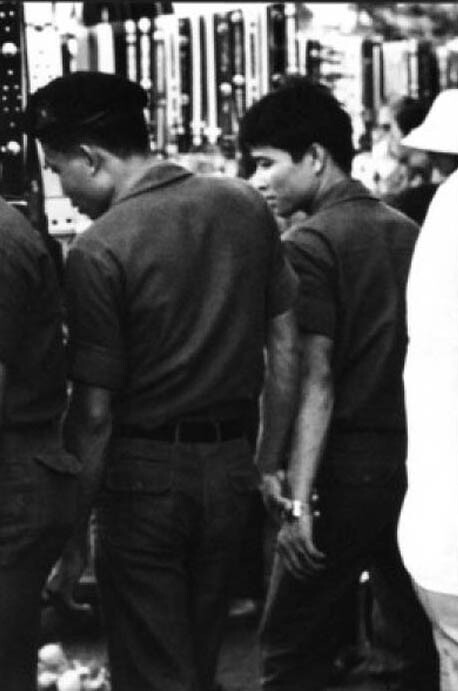
Born in Vietnam but raised in Denmark, Danh Vo is a “man without qualities.” “What he thinks of anything will always depend on some possible context – nothing is, to him, what it is; everything is subject to change, in flux, part of a whole, of an infinite number of wholes presumably adding up to a super whole that, however, he knows nothing about.” (Robert Musil). Or, as Vo himself put it, someone who sees the use of things when he can’t find the meaning in them.
Vo became known through a number of maverick projects. For his solo show “Not a Drop but the Fall” (2005) in gallery Klosterfelde, Vo duped both the Danish Art Council and his former boyfriend Michael Elmgreen into unwittingly supporting a fake application. Under the name of the famous art-duo Elmgreen & Dragset, he received funding to travel to Marfa, Texas, and document the opening of their Prada shop project, which he later showed together with the scam’s paper trail. In the ongoing project Vo Rocasco Rasmussen (2003-) Vo married and divorced several people in order to accumulate a succession of last names intended to bewilder customs’ officers.
For his graduate exhibition, Vo asked his family …
